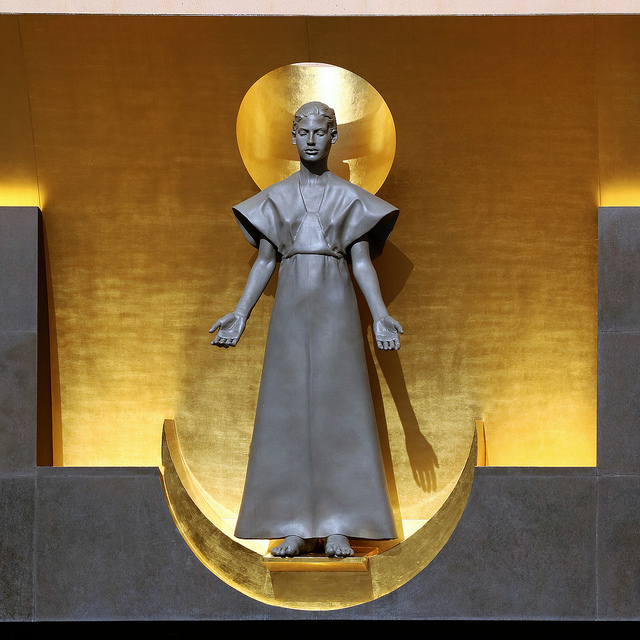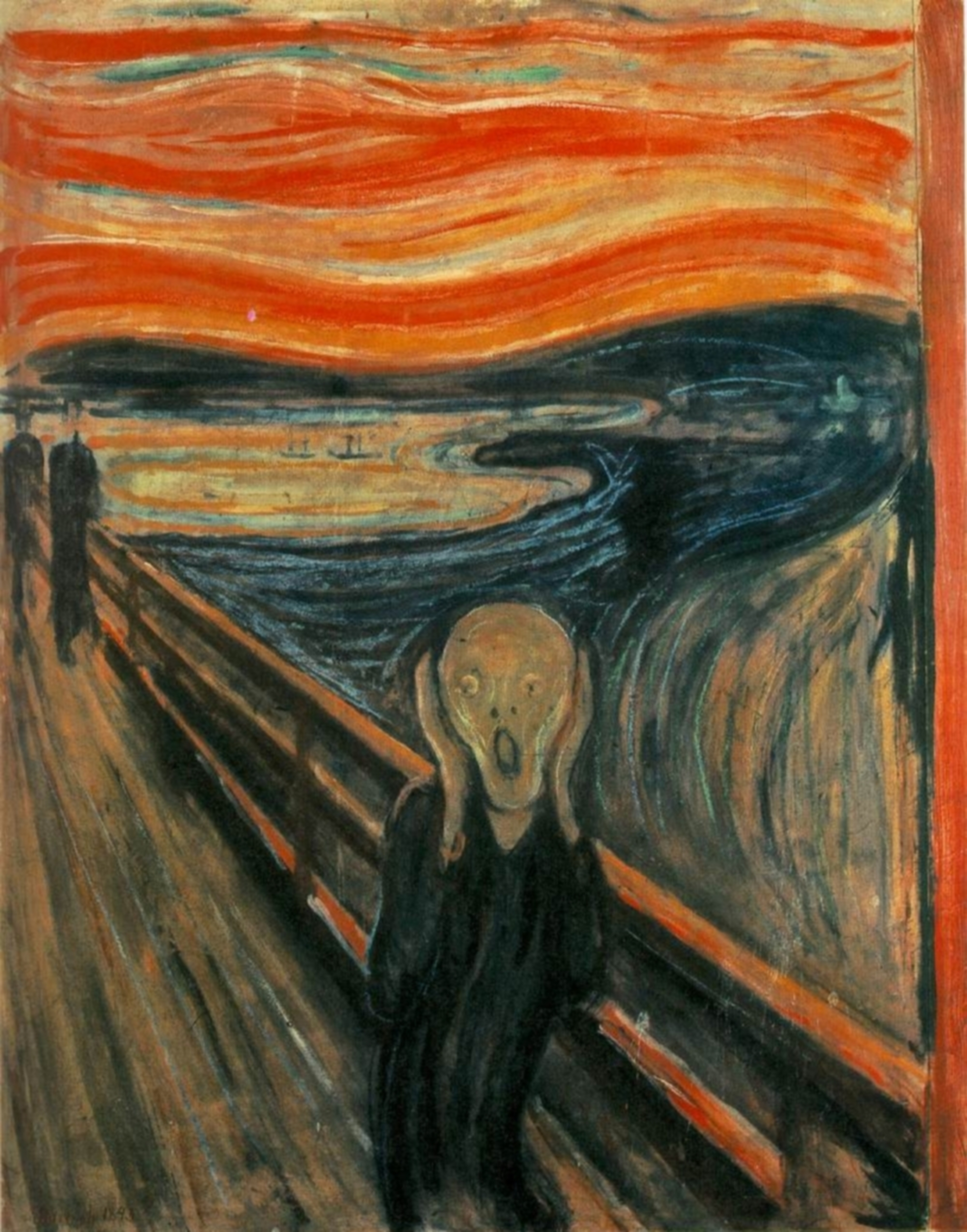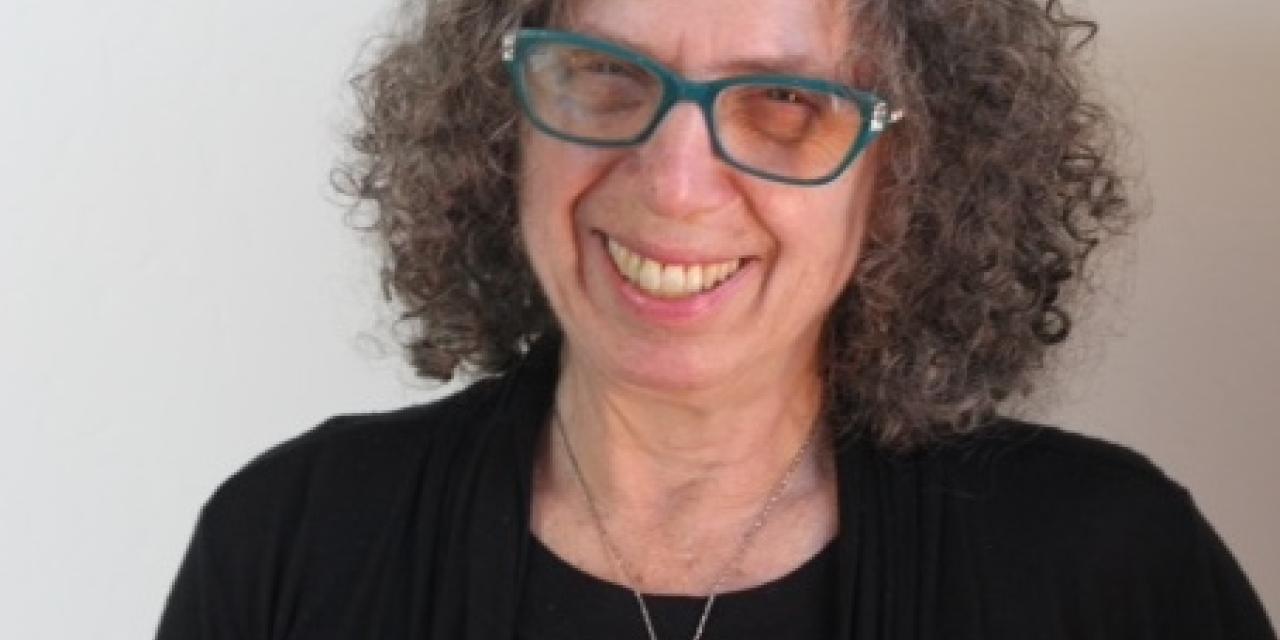Deborah Sokolove is director of the Henry Luce III Center for the Arts and Religion at Wesley Theological Seminary, Washington, D.C., where she also is professor of art and worship. She is the author of Sanctifying Art, co-author of Calling on God: Inclusive Christian Prayers for Three Years of Sundays, and an artist with many interests. In this edited conversation, she talks about how God works through art and artmaking.
Christian theologians sometimes define beauty as “a reflection of God’s glory.” You propose redefining beauty as “relational experience.” Why?
My definition is something more, not instead of. I agree with theologians that God is the source and measure of all beauty. But to define art only as a reflection of God’s glory is an abstraction, not terribly useful when talking about whether a given artwork is beautiful. Beauty isn’t a thing of its own. It’s not a lasting essential property of some objects and absent in others. I’m just as capable as anyone of saying, “Oh, that’s so beautiful!” It’s my emotional idiosyncratic reaction. We can respond to a given piece as if it reflects God’s beauty and glory, but we are incapable of knowing for sure.
 We can only experience the beauty of humanly created things through relationship with them, just as relationship is the only way to know God. In Sanctifying Art, I explain that essayist Barbara Nicolosi and I had opposite reactions to Robert Graham’s statue Our Lady of the Angels. Its simplicity, strength and presence took away my breath with delight, but Nicolosi sees it as ugly. For her, the true aim of art is to mirror the most beautiful aspects of the natural world, and she sees the statue as a failed attempt to communicate a political message that will make all races feel welcome.
We can only experience the beauty of humanly created things through relationship with them, just as relationship is the only way to know God. In Sanctifying Art, I explain that essayist Barbara Nicolosi and I had opposite reactions to Robert Graham’s statue Our Lady of the Angels. Its simplicity, strength and presence took away my breath with delight, but Nicolosi sees it as ugly. For her, the true aim of art is to mirror the most beautiful aspects of the natural world, and she sees the statue as a failed attempt to communicate a political message that will make all races feel welcome.
Our Lady of Angels, Roman Catholic Cathedral of Our Lady of the Angels, Los Angeles, California. Flickr image by Slice of Life.
Some Christians committed to economic justice say it’s self-indulgent or wasteful for churches to spend money on art. How do you resolve this tension?
Perhaps art is also a way to address economic injustice. The arts can help people who are in desperate straits—psychologically, financially, spiritually—to see themselves as made in the image of God. Looking at art or being in its presence is important. But working with visual or dramatic tools, or singing together, is different than going to a play or a museum. Process is more important than product. The healing happens when you invite people into learning skills and making art together.
Can you give examples?
In my chapter “Art and the Need of the World,” I tell many stories of how art fills human need by offering delight in a world filled with pain or offering a way to transcend pain through creative expression. Our humanity is more than the sum of our physical needs. We need wonder, meaning and connection just as much as—or maybe even more than—we need food and water and air. Brother Guy Consolmagno, the Vatican’s astronomer, says he initially questioned his Peace Corps assignment to teach physics and astronomy in Kenya. But when he set up his car-battery-powered telescope and slideshow in small villages, people were fascinated to see moon craters and Saturn’s rings.
Brother Guy realized that the basic hunger to understand how the world works, and our place in it, is essential to what makes us human. That’s why people in Nazi concentration camps hummed, whistled, composed music and scratched drawings on walls. Nicole Boxer’s documentary How I Got Over shows how the lives of 15 formerly homeless women changed when they created and performed a one-night play at The Kennedy Center. Art offers a way of knowing. It fills a hunger that nothing else can fill and opens doors that cannot be opened in any other way. It creates a channel for the truth that Jesus told us will make us free.
How have you seen artmaking change seminarians?
At Wesley Theological Seminary, our common studio is used primarily for artists-in-residence but also has tables for students and professors. What happens in studio sometimes seems miraculous. Each semester, 10 students can sign up for a one-credit, non-graded class with the artist-in-residence. They all work on the same problem, such as “How do I activate this space with only three lines or two lines and a circle?”
They’re all using their hands and a portion of their minds to see and think how to draw, paint or carve. But it frees them to talk about very deep things, like their hopes, dreams, classes and sorrows. These students very often become bonded and friends for life. It’s very healing to hear each other, partly because they don’t have to look each other in the eye. Artmaking allows for that.
The way I encourage people to do art criticism is supportive. No one may say that they love or hate something or that the art is good or bad. You can only ask or talk about what you see. This practice carries over into the rest of life. It helps people learn to see without being negative, to read Scripture without closing themselves off from multiple layers of meaning.
Can beauty or art save the world?
Ultimately only God saves us. Art is a tool, a set of practices that can be used for good or to destroy. I don’t think art will save the world, although certainly art practices can save certain people from certain things. A friend wanted to make a two-inch-square drawing of something in her garden, every day for a year. It became a spiritual practice in noticing and feeling gratitude.
 So art isn’t salvific, but it can help move people in the direction of God or awareness of God’s presence. In his wonderful book Who’s Afraid of Modern Art?, Daniel A. Siedell writes cogently about how art demands your attention and requires you to change, to be in relationship long enough to notice things. Siedell is an art historian and faithful, thoughtful evangelical Christian. He says that looking at Edvard Munch’s The Scream revealed how the process helped the painter make sense of his life and keep living. Siedell says that encounters with art can be aesthetic reminders of the theological reality that we all live before the face of God, others and ourselves.
So art isn’t salvific, but it can help move people in the direction of God or awareness of God’s presence. In his wonderful book Who’s Afraid of Modern Art?, Daniel A. Siedell writes cogently about how art demands your attention and requires you to change, to be in relationship long enough to notice things. Siedell is an art historian and faithful, thoughtful evangelical Christian. He says that looking at Edvard Munch’s The Scream revealed how the process helped the painter make sense of his life and keep living. Siedell says that encounters with art can be aesthetic reminders of the theological reality that we all live before the face of God, others and ourselves.
The Scream, Edvard Munch (1893). Wikimedia Commons image.
How can art be both sanctified and sanctifying, or, as you put it in your book, “a legitimate response to God’s call on all our lives to love and serve the world”?
The word “sanctified” means being set apart to do God’s work in the world. Art as both a practice and an object (many objects, not all) can be set aside for God’s purposes. Both communion vessels and projector screens can be sanctified objects.
Sanctifying processes can help us as individuals and, collectively, as churches to be God’s hands and feet in the world. Like any artist, I have to confront the difference between my wonderful shining vision about what my artwork will be and what actually happens in my studio. It depends on the capability of my hands, the materials and what I’m actually able to make. In that sense, every art is a failure. And yet, when I take my ego and expectation out of it, it shines with its own reality. I might see a particular artwork as redeemed by God’s love. It’s the same with how we see other humans. Seeing with the eyes of love brings us back to the idea of beauty as a relational experience. I remember being in a life model class and realizing that every human body is beautiful.
I’ve participated in several icon workshops. Each has a teacher and 10 to 20 learners, all set on the same problem. Every hour someone says, “Oh no, I messed up!” or “I didn’t follow the instructions correctly.” It’s easy to feel I have failed when comparing my icon to the teacher’s example. At the end, all icons are lined up for a group picture. All are different, because each person’s hand is different, and all are beautiful. They become sanctified.
LEARN MORE
Read Sanctifying Art: Inviting Conversation Between Artists, Theologians, and the Church (Art for Faith's Sake). Explore Deborah Sokolove’s artwork.

